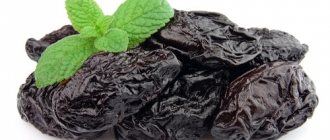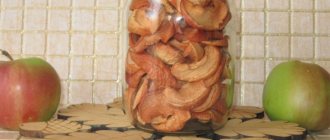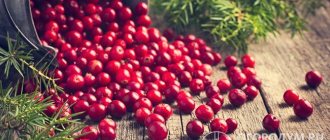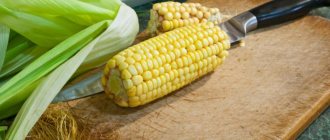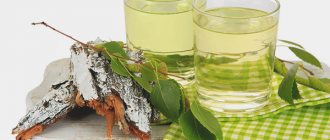Storage periods and conditions according to GOST
Storage conditions and shelf life of bay leaves are regulated by the current GOST 17594-81. It is necessary to store laurel leaves in accordance with accepted sanitary rules.
The shelf life of the product is determined by the packaging method:
• when laurel is kept in fabric bags and boxes – 9 months from the date of packaging; • in packaged form – 12 months.
Do you know that…
After the expiration of the recommended shelf life, the spice can be used for its intended purpose if its taste and quality characteristics comply with the standards of the current GOST.
Laurel storage
In order for it to retain its beneficial properties, unique taste characteristics and unique aroma for a long time, it must be stored under appropriate conditions. When storing this spice at home, it is important to exclude factors such as:
- Increased level of humidity in the room.
- Presence of foreign pungent odors.
- Sudden changes in temperature.
- Exposure to direct sunlight.
Note! According to experts, the use of bay leaves, the storage standards of which were not observed, cannot cause food poisoning. However, it is quite capable of spoiling the taste characteristics of the dishes in the preparation of which it is used.
The expiration date of purchased bay leaves is indicated on the packaging. Self-dried raw materials have a shelf life of no longer than 1 year.
How to choose
When purchasing bay leaves from a private seller, take into account the following characteristics:
- A high-quality product will emit a bright aroma. If you crush a piece of laurel between your fingers, the skin will receive a characteristic smell.
- A good dry leaf will have a grayish olive color. Brown or yellowish leaves will not give the expected aroma.
- The bay leaf should have a smooth upper surface and a slightly rough lower surface. It shouldn't be damaged.
- A fresh (recently harvested) bay leaf will be springy. If it crumbles, then it is better to refuse the purchase.
Raw leaves should have a rich green tint and uniform coloring.
If you buy packaged spices, then the requirements indicating a quality product will be different:
- The shelf life of packaged laurel is no more than 1 year, so look at the date of packaging of the spice.
- Foil packaging retains its properties better. It is advisable to avoid buying bay leaves in a paper bag. In this case, there is a high probability that the seasoning has taken away foreign aromas and moisture.
- The packaging must be sealed, i.e., not have any damage.
- Carefully feel the package. This will help ensure that the leaves are intact.
- Finished ground spice can be made from defective raw materials. Moreover, in this state it very quickly loses its aroma.
Tip of the day
If you need ground spice, buy a regular leaf and then grind it in a coffee grinder.
How, where and what to store at home
If we talk about how to keep bay leaves fresh, then you need to follow certain rules.
- The spice must be kept out of reach of sunlight and in a cool place. A shelf in a closed kitchen cabinet works well.
- The air in the laurel storage area should not stagnate.
- There should be no other seasonings with pronounced aromas near the container in which the bay leaf lies.
- Recommended air temperature is 10-15 °C, air humidity is not higher than 75%.
The container in which the bay leaf will be stored must have a tight-fitting lid. Suitable:
- container made of glass, ceramics, tin;
- any vacuum packaging with the possibility of repeated opening and closing.
Bags made of linen or burlap are not suitable for storing bay leaves. The fabric cannot protect the spice from air. If you use fabric bags, keep them in a tightly closed cabinet, separate from all foods.
Note to the hostess
In order for the seasoning to be stored for a long time, you only need to remove the leaves from the container with dry hands.
After cooking, the bay leaf is removed from the dish (it should not end up on the plate). Thrifty housewives wash the leaves, dry them and reuse them. They continue to give off their scent
How to keep it fresh
Inspect purchased or picked fresh bay leaves first. There should be no damaged areas on its surface. Then rinse it under running water to remove dust and dry thoroughly, collecting the leaves in small bunches.
Tip of the day
To dry, use a room with a good draft. Place the leaves on a cloth in one layer and leave for 2-3 days.
Drying
How can you dry bay leaves? There are two ways:
- Collect bunches from the prepared (inspected and washed) sheet. Then hang them under a canopy to keep them out of the sun's rays. The weather outside should be dry and hot.
- An oven can be used for the drying process. Spread the spice on a baking sheet in one layer and set the temperature to 60 °C.
Freezing
For long-term storage of fresh laurel, use the freezer. It must first be packaged in bags or placed in food containers.
First dry the product a little at room temperature.
In the oven or microwave
To dry bay leaves at home, you can use a conventional oven or microwave. When drying in the oven you must:
- Rinse the spice thoroughly and dry along with the baking sheet.
- Place evenly so that they do not touch each other.
- Place in the oven, preheated to 45° for 3.5-4 hours.
- Then turn the leaves over to the other side and dry the same amount.
For good ventilation, the oven door must be opened slightly. This method requires special vigilance. At high temperatures, raw materials quickly burn.
Application of microwave oven:
- A special plate for the microwave oven should be lined with a small cotton napkin.
- Arrange the bay leaves and cover with a second napkin. The spice is dried for no more than 3 minutes at a power of 200 W.
How to store on a branch
Many people are interested in how to properly store a bay leaf on a branch. It must first be dried thoroughly.
- Inspect the branches and remove all damaged leaves. Rinse and lay out to dry on a cloth under a canopy with a good draft. Leave them for 7–10 days. As soon as the leaves turn a light green shade, you can form brooms from the branches.
- Place the longest branches inside the bunch. Place the shorter ones on the sides. After this, tighten the base with a bandage or twine, but not too tightly. After two months, when the branches have dried well, the fastening can be tightened.
Store dried bay leaves in dark, tightly tied bags in the refrigerator or cool pantry. In winter, they can be taken out onto the balcony or loggia.
It is important to know!
If the laurel leaves become dark, then this is a sign of damage. They should be thrown away.
How to grow laurel at home (video)
To ensure that the quality of the product is not in doubt, it is better to grow a laurel plant on your windowsill. You will learn how to do this from the video:
Bay leaf is a spicy seasoning that can be found in the kitchen of every housewife. Its specific aroma is known to everyone from early childhood. This spice is added to almost every first dish and most sauces. Boiled with bay leaves, ordinary potatoes acquire a wonderful aroma. This seasoning is also used to prepare various side dishes and meats. It does not lose its aromatic properties for a long time. But knowing how to store bay leaves at home is very important.
Cooking with bay leaf
In cooking, use dried bay leaves instead of fresh ones.
This is where most chefs recommend using dried seasoning rather than freshly harvested.
- Fresh bay leaves have a deeper green color and more elastic texture than dried ones.
- The bay leaves sold in the spice aisle of most stores are pre-dried, so you won't have to worry about accidentally buying the wrong one.
Add bay leaves to slow-cooking dishes.
Next time you make beef stew, ribs, or pasta, try adding 1 or 2 whole bay leaves. Dried leaves gradually release their flavor as they heat, making slow-cooking recipes the perfect place to let them work their flavor wonders.
- Use only whole leaves. Bay leaves are not meant to be eaten, so chopping or shredding them into small pieces will only make it more difficult to remove from the dish after cooking.
- A couple of bay leaves can also be a welcome addition to a savory casserole, stew, or a pot of rice, couscous, or risotto.
Boil or steam fresh foods with bay leaves to enhance their natural flavor.
Try adding 2-3 leaves to the water you use for cooking foods such as vegetables, fresh fish and seafood. They will help create a richer taste without overloading the ingredients or affecting their taste.
- Don't be afraid to use bay leaves in addition to any other herbs you like for cooking, such as lemon, vinegar, olive oil, garlic, ginger, or fresh herbs.
Limit the number of bay leaves you use in one dish.
One bay leaf can give flavor to an entire dish. In general, it's best not to add more than 2 or 3 leaves to anything you cook. If you overdo it, you can easily overwhelm the essential flavors of your dish.
- This is especially important when the recipe you are following requires additional seasonings and aromatic ingredients.
Remove leaves from prepared foods immediately after cooking.
Always keep track of the amount of bay leaves you add and make sure you get them all out before serving. Although bay leaves are an addition to a variety of foods, they are not very appetizing on their own. This is why it is so important to use whole leaves rather than breaking them up.
- Unlike many other herbs, bay leaves remain tough even after hours of exposure to high cooking temperatures. For this reason, they may also pose a choking hazard or cause minor cuts or abrasions if accidentally swallowed.


